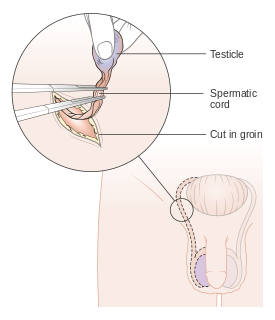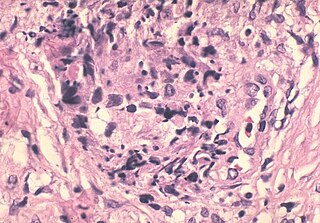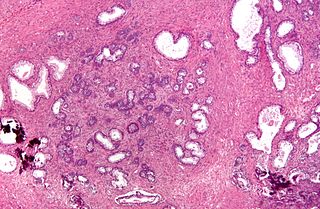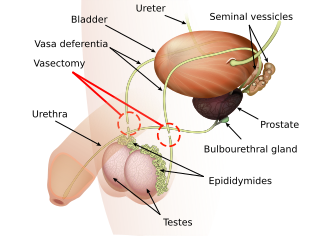 W
WA cystoprostatectomy is a surgical procedure in which the urinary bladder and prostate gland are removed. The procedure combines a cystectomy and a prostatectomy.
 W
WLaparoscopic radical prostatectomy (LRP) is a form of radical prostatectomy, an operation for prostate cancer. Contrasted with the original open form of the surgery, it does not make a large incision but instead uses fiber optics and miniaturization.
 W
WOrchiectomy is a surgical procedure in which one or both testicles are removed, as a form of castration. The surgery is typically performed as treatment for testicular cancer, in some cases of testicular torsion, as a gender-affirming procedure for trans women, and is sometimes used in the management of advanced prostate cancer.
 W
WOrchiopexy is a surgery to move an undescended (cryptorchid) testicle into the scrotum and permanently fix it there. Orchiopexy typically also describes the surgery used to resolve testicular torsion.
 W
WPenectomy is penis removal through surgery, generally for medical or personal reasons.
 W
WA penile implant is an implanted device intended for the treatment of erectile dysfunction, Peyronie's disease, ischemic priapism, deformity and traumatic injury of the penis, and for phalloplasty in men or phalloplasty and metoidioplasty in female-to-male gender reassignment surgery. Although there are many distinct types of implants, most fall into one of two categories: malleable and inflatable.
 W
WProstate biopsy is a procedure in which small hollow needle-core samples are removed from a man's prostate gland to be examined for the presence of prostate cancer. It is typically performed when the result from a PSA blood test is high. It may also be considered advisable after a digital rectal exam (DRE) finds possible abnormality. PSA screening is controversial as PSA may become elevated due to non-cancerous conditions such as benign prostatic hyperplasia (BPH), by infection, or by manipulation of the prostate during surgery or catheterization. Additionally many prostate cancers detected by screening develop so slowly that they would not cause problems during a man's lifetime, making the complications due to treatment unnecessary.
 W
WProstatectomy as a medical term refers to the surgical removal of all or part of the prostate gland. This operation is done for benign conditions that cause urinary retention, as well as for prostate cancer and for other cancers of the pelvis.
 W
WRadical retropubic prostatectomy is a surgical procedure in which the prostate gland is removed through an incision in the abdomen. It is most often used to treat individuals who have early prostate cancer. Radical retropubic prostatectomy can be performed under general, spinal, or epidural anesthesia and requires blood transfusion less than one-fifth of the time. Radical retropubic prostatectomy is associated with complications such as urinary incontinence and impotence, but these outcomes are related to a combination of individual patient anatomy, surgical technique, and the experience and skill of the surgeon.
 W
WA sperm granuloma is a lump of extravasated sperm that appears along the vasa deferentia or epididymides in vasectomized men. Sperm granulomas are rounded or irregular in shape, one millimeter to one centimeter or more, with a central mass of degenerating sperm surrounded by tissue containing blood vessels and immune system cells. Sperm granulomas can be either asymptomatic or symptomatic.
 W
WIf medical treatment is not effective, surgery may need to be performed for benign prostatic hyperplasia.
 W
WTransurethral resection of the prostate is a urological operation. It is used to treat benign prostatic hyperplasia (BPH). As the name indicates, it is performed by visualising the prostate through the urethra and removing tissue by electrocautery or sharp dissection. It has been the standard treatment for BPH for many years, but recently alternative, minimally invasive techniques have become available. This procedure is done with spinal or general anaesthetic. A triple lumen catheter is inserted through the urethra to irrigate and drain the bladder after the surgical procedure is complete. Outcome is considered excellent for 80–90% of BPH patients. The procedure carries minimal risk for erectile dysfunction, moderate risk for bleeding, and a large risk for retrograde ejaculation.
 W
WVasectomy is a surgical procedure for male sterilization or permanent contraception. During the procedure, the male vasa deferentia are cut and tied or sealed so as to prevent sperm from entering into the urethra and thereby prevent fertilization of a female through sexual intercourse. Vasectomies are usually performed in a physician's office, medical clinic, or, when performed on an animal, in a veterinary clinic—hospitalization is not normally required as the procedure is not complicated, the incisions are small, and the necessary equipment routine.